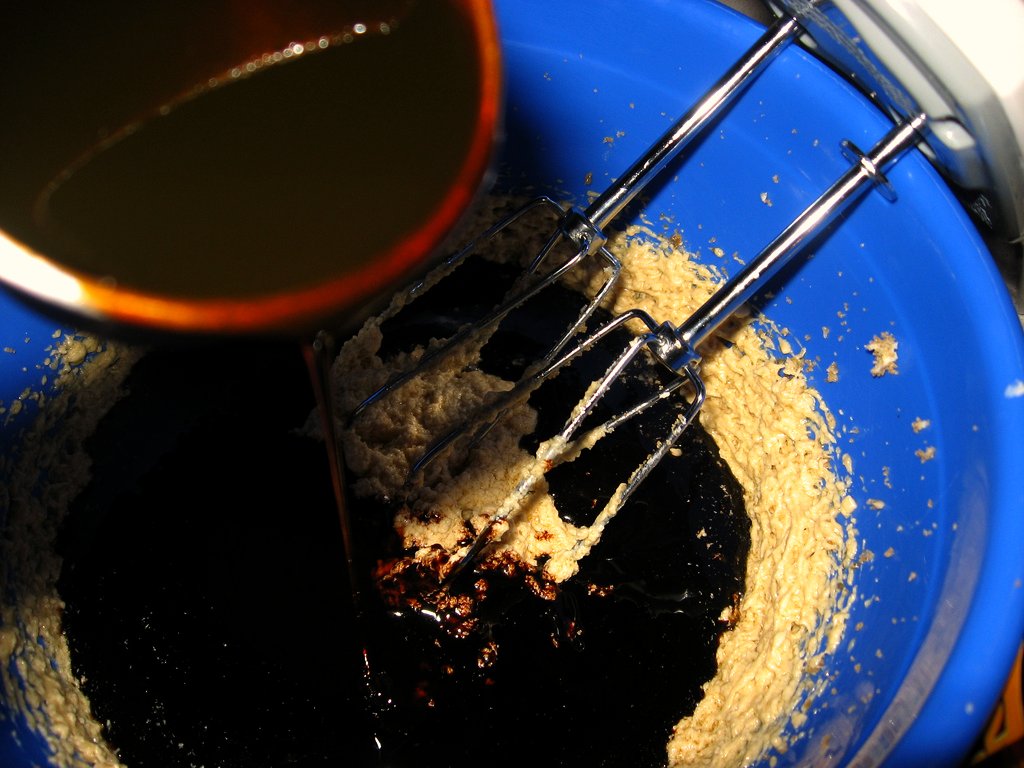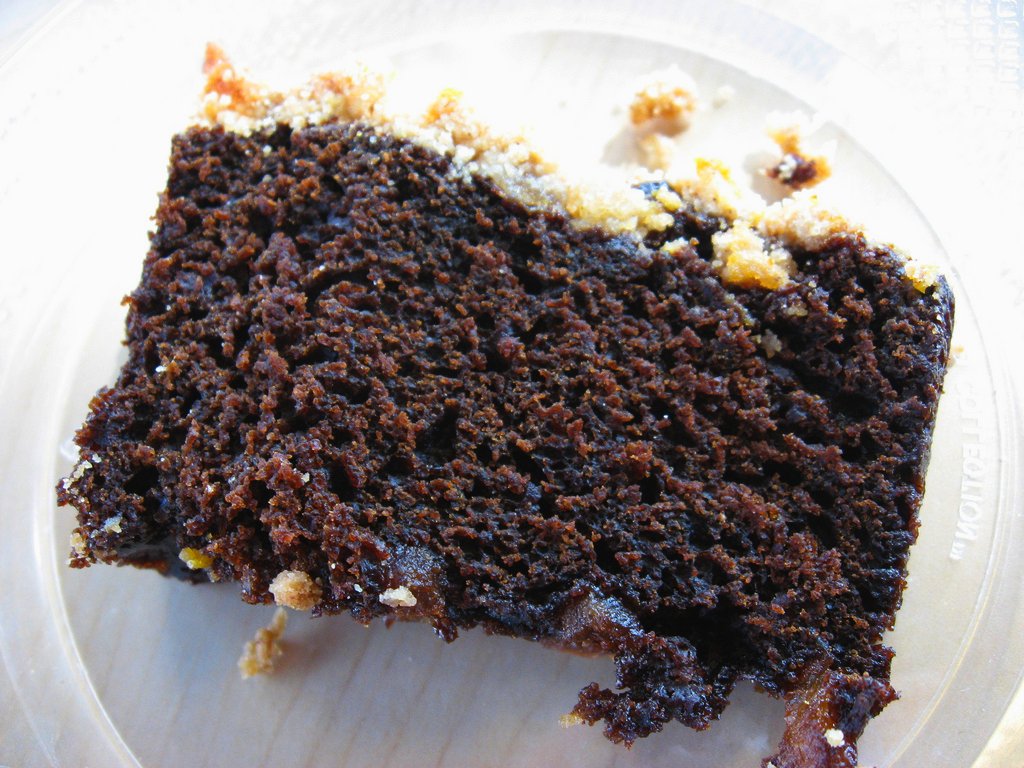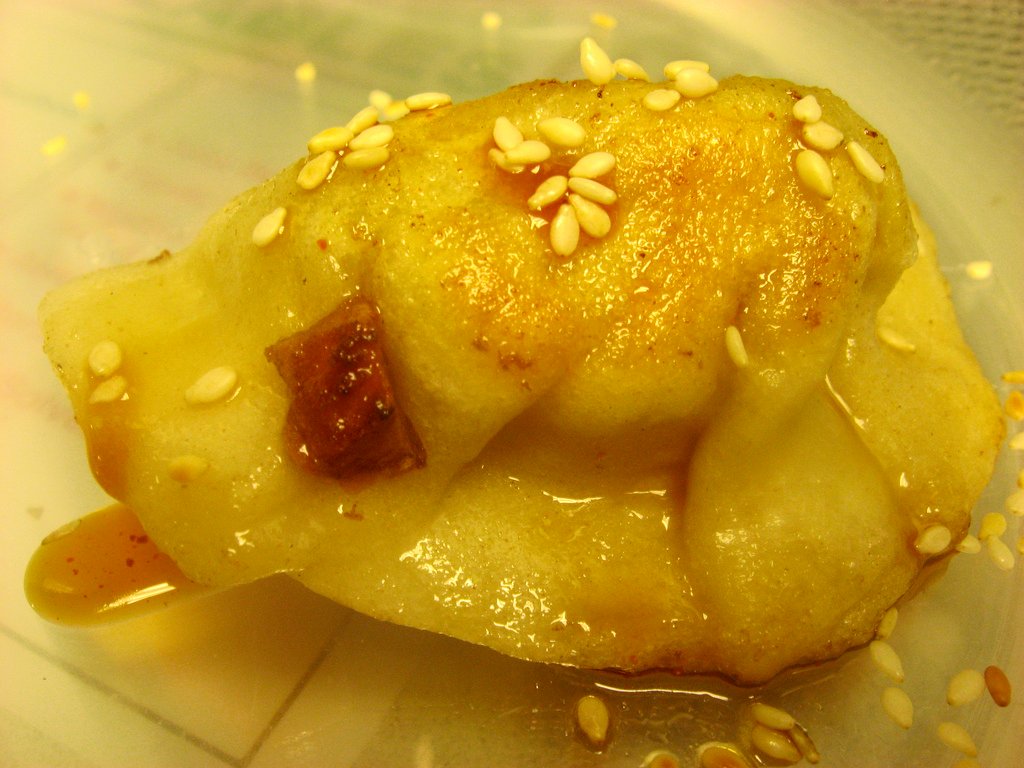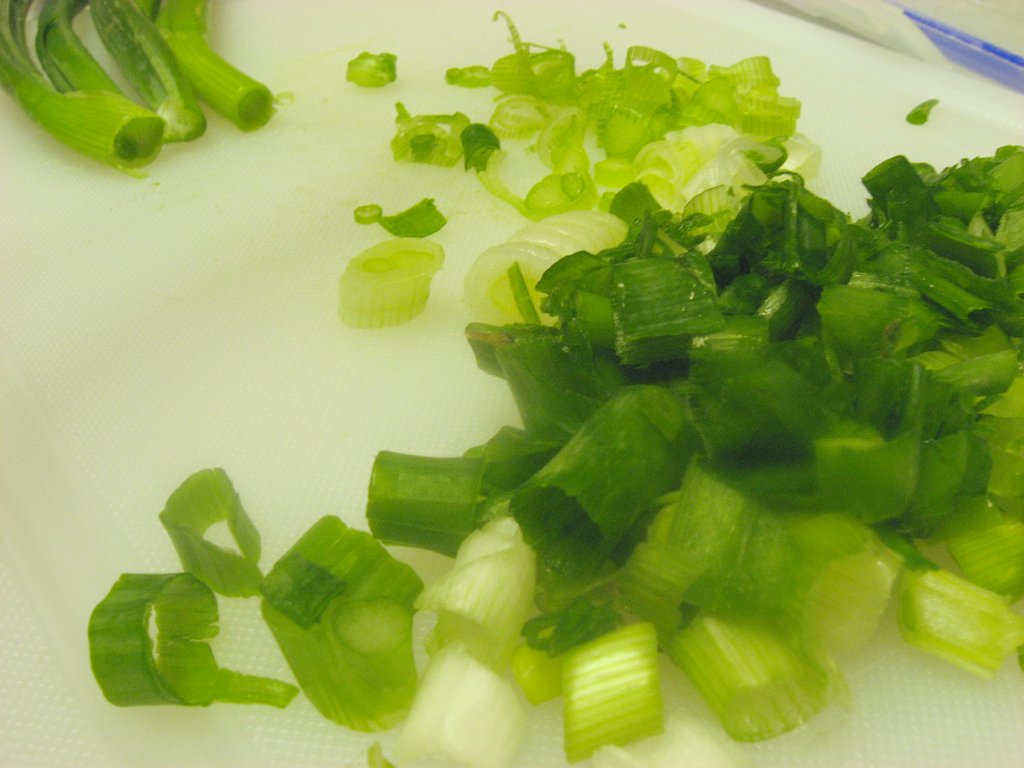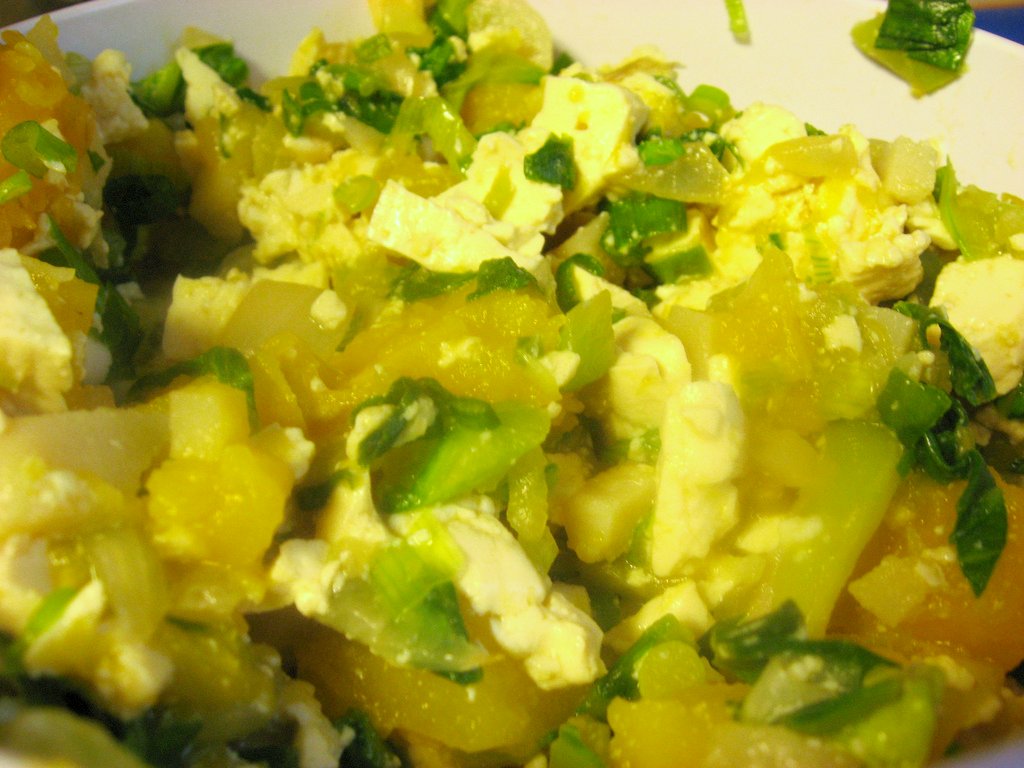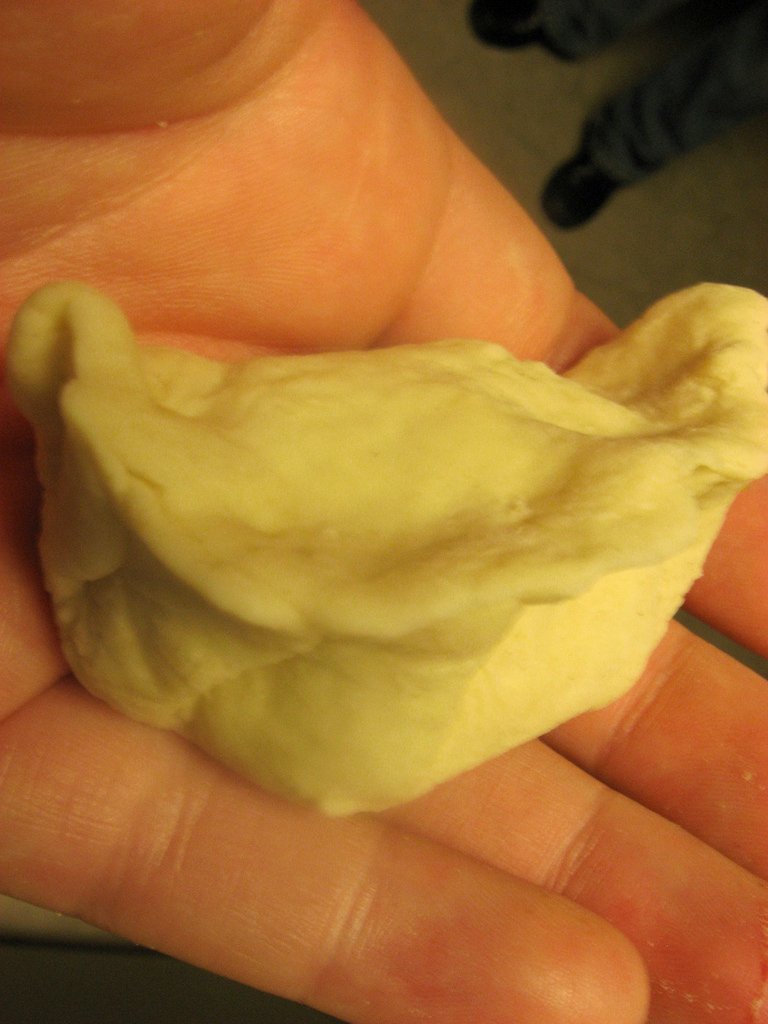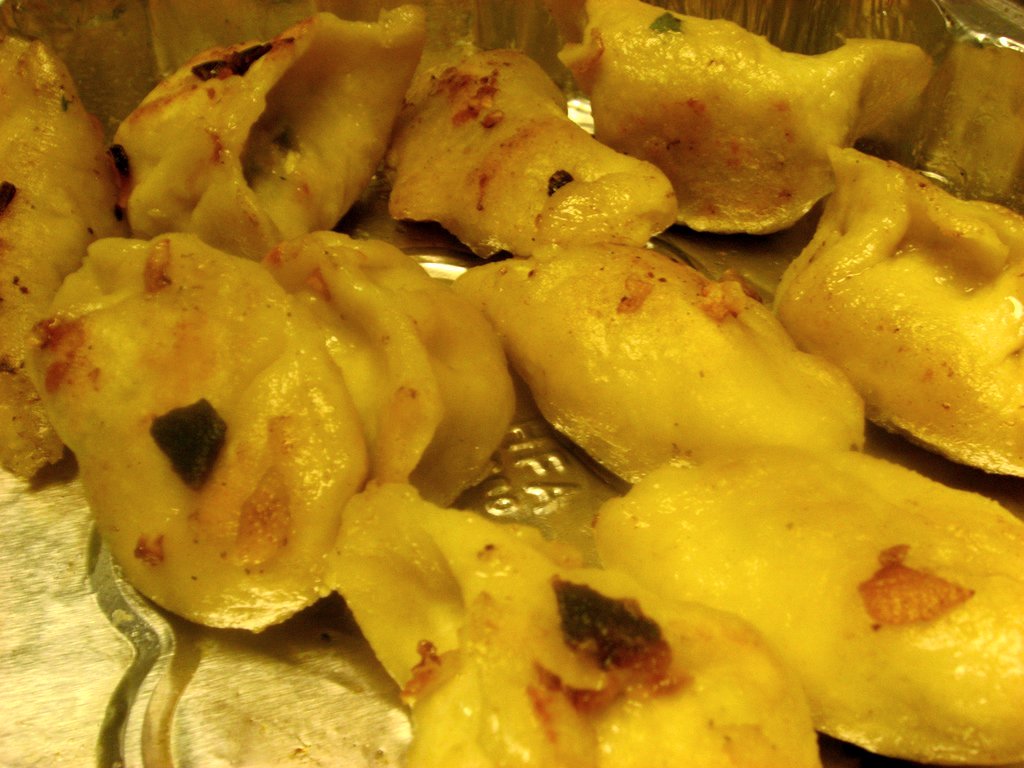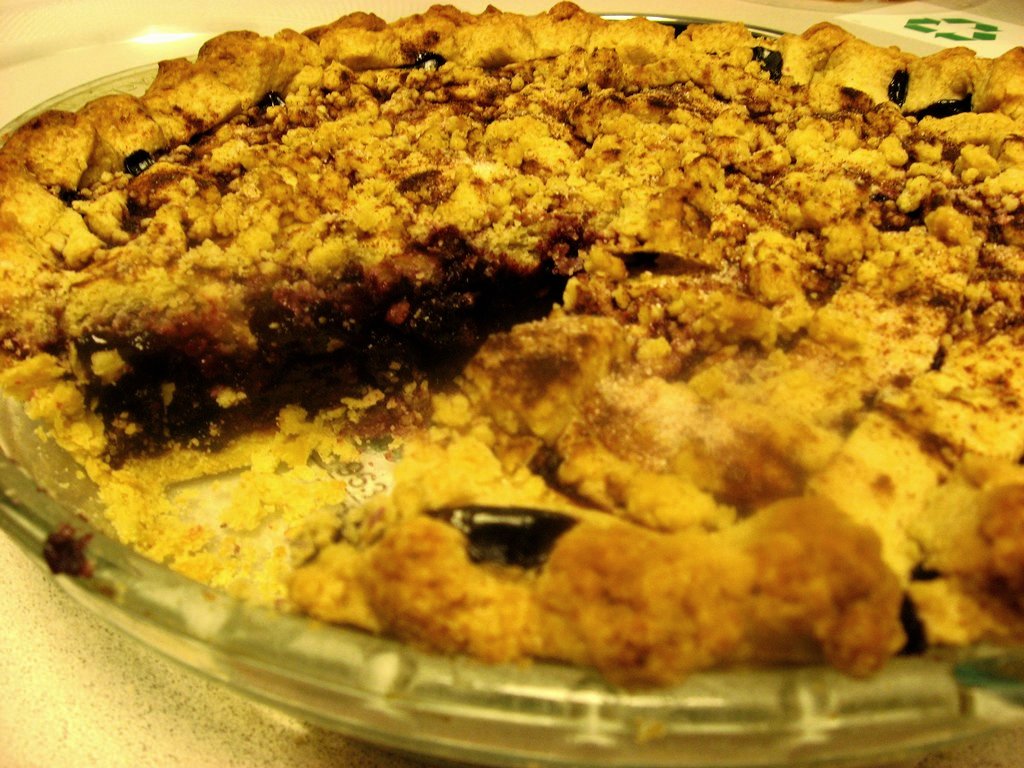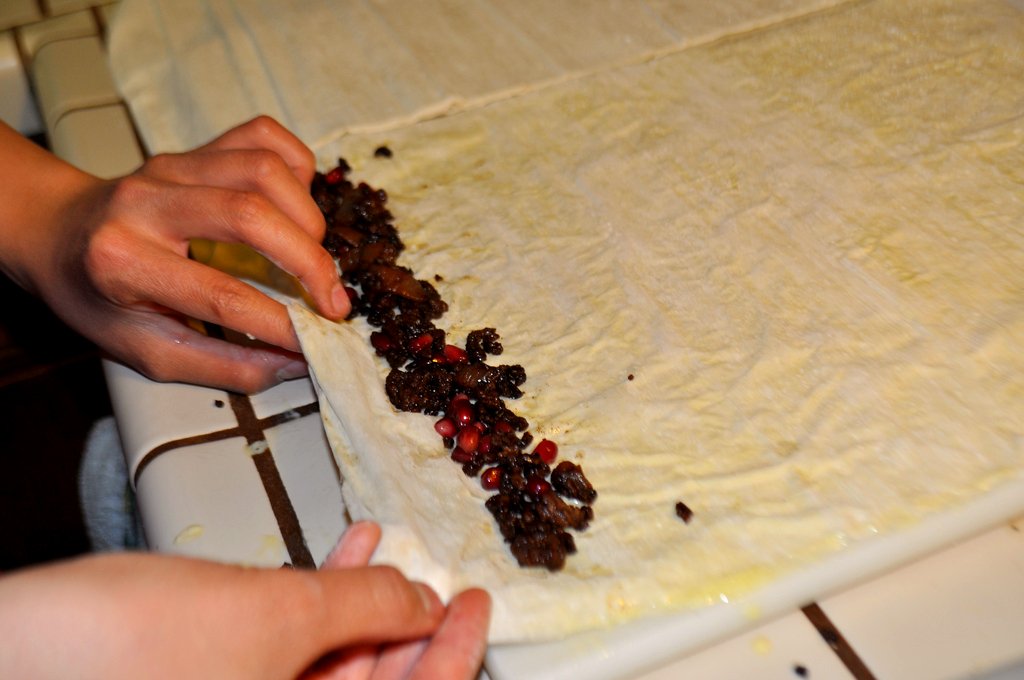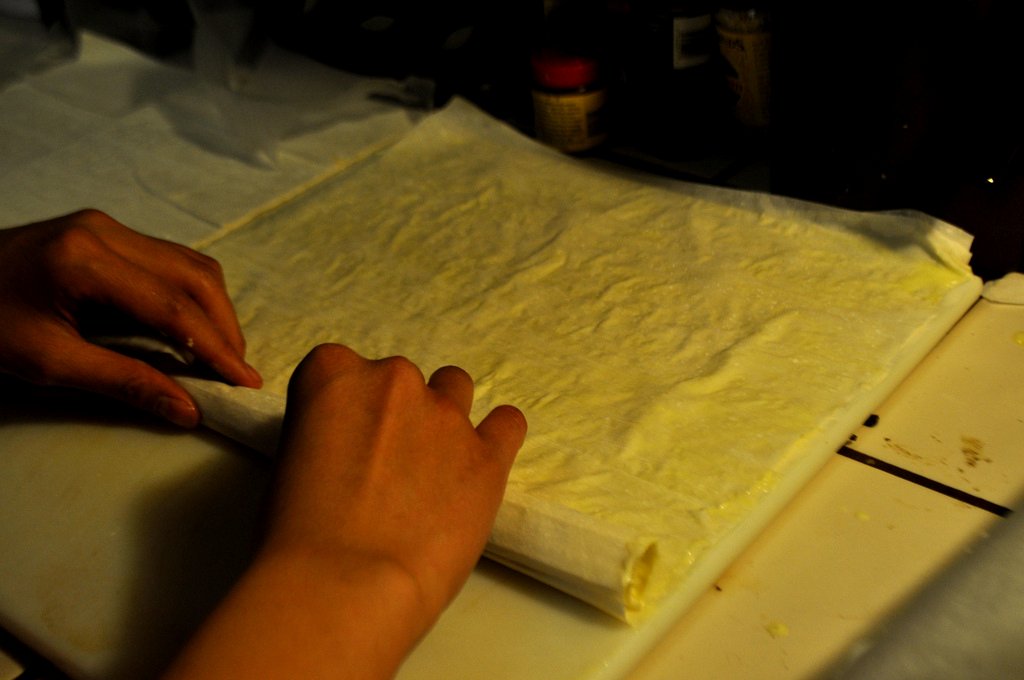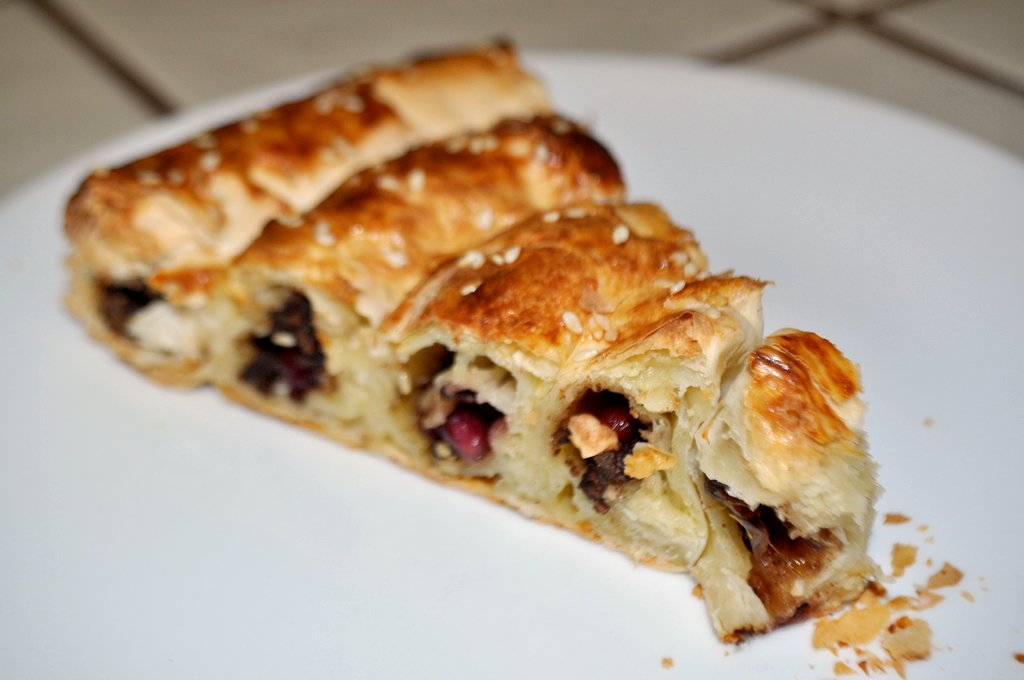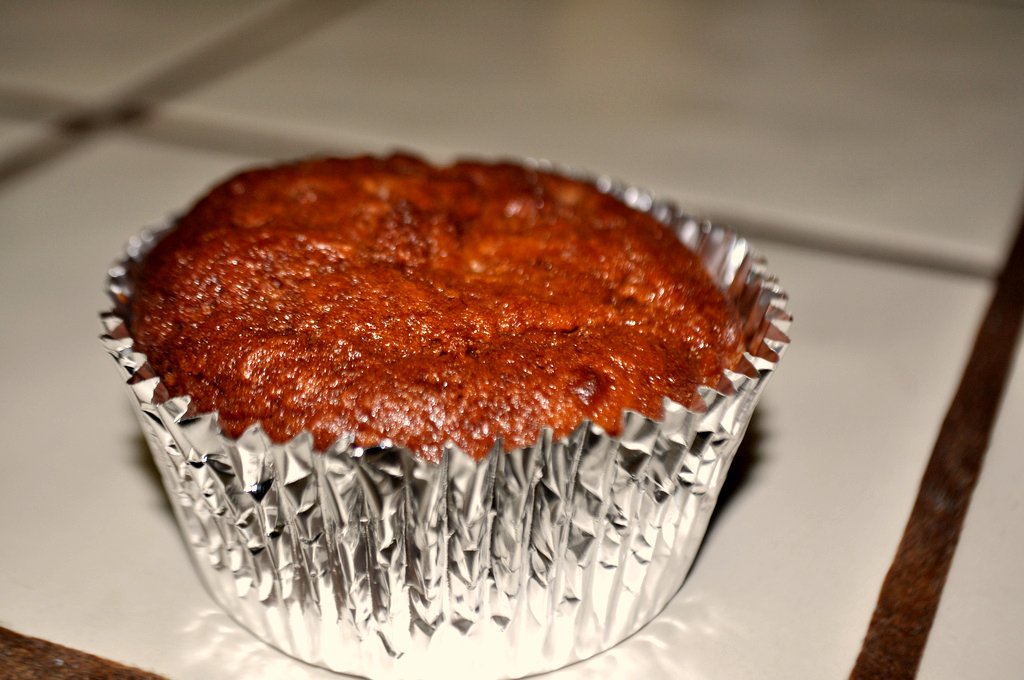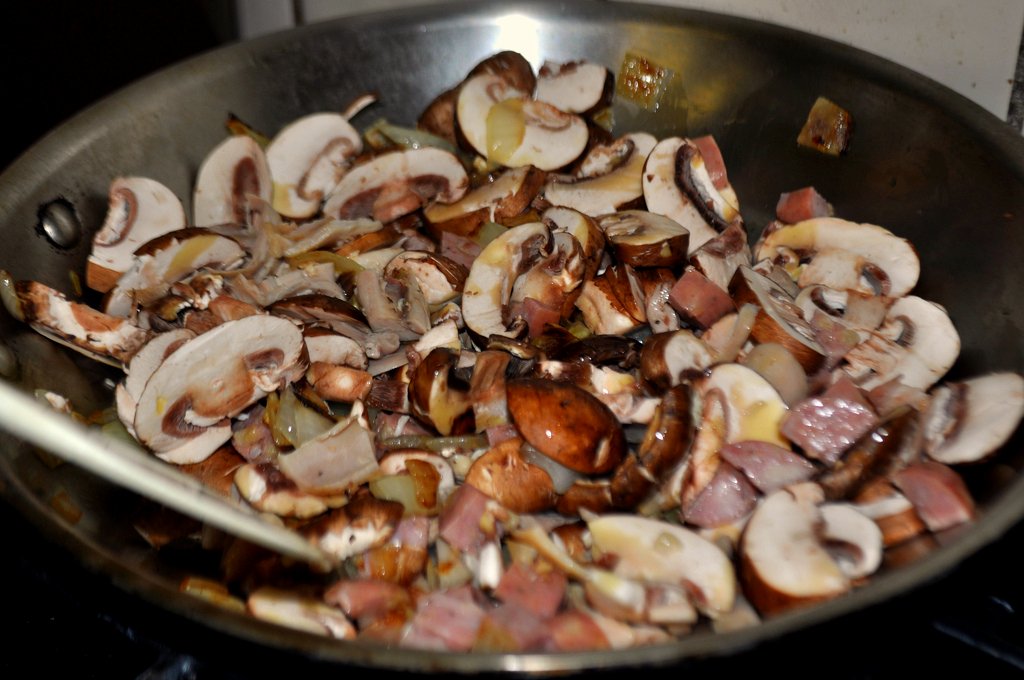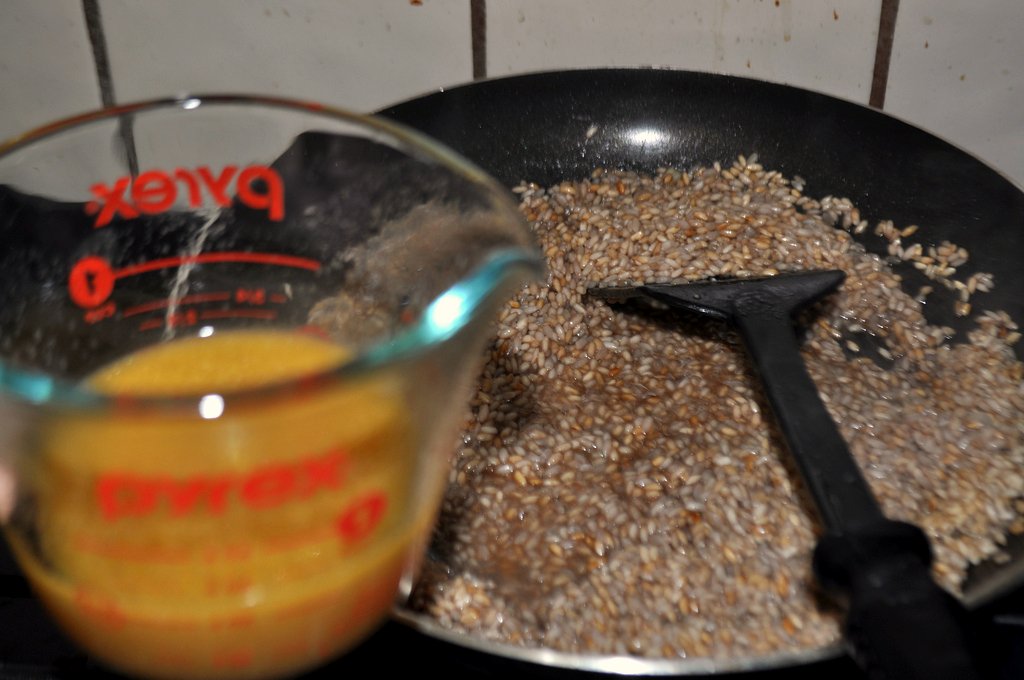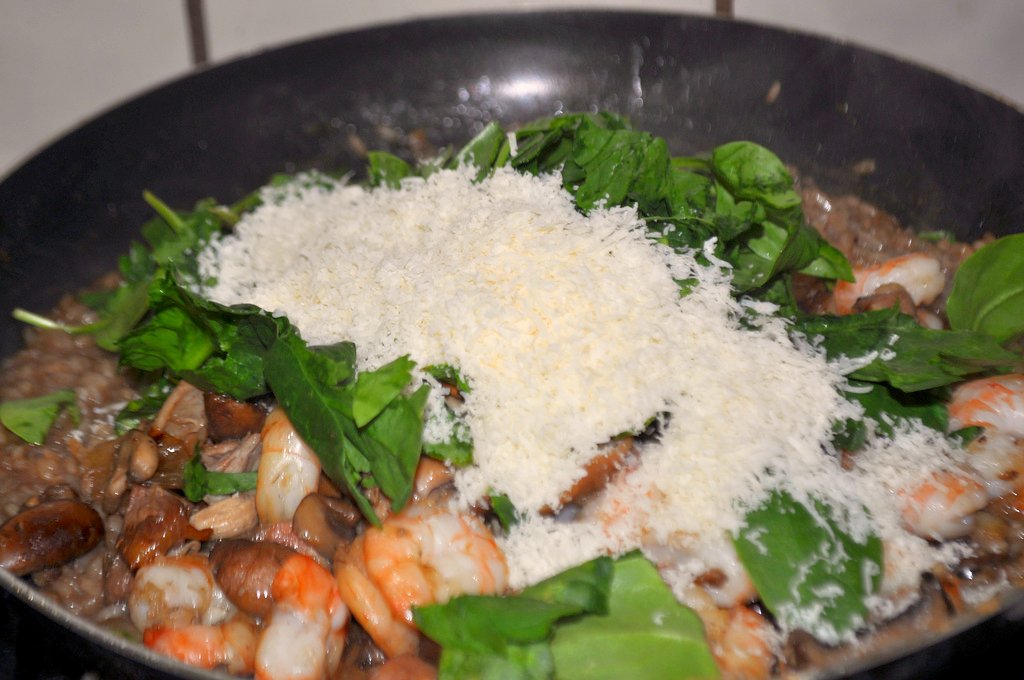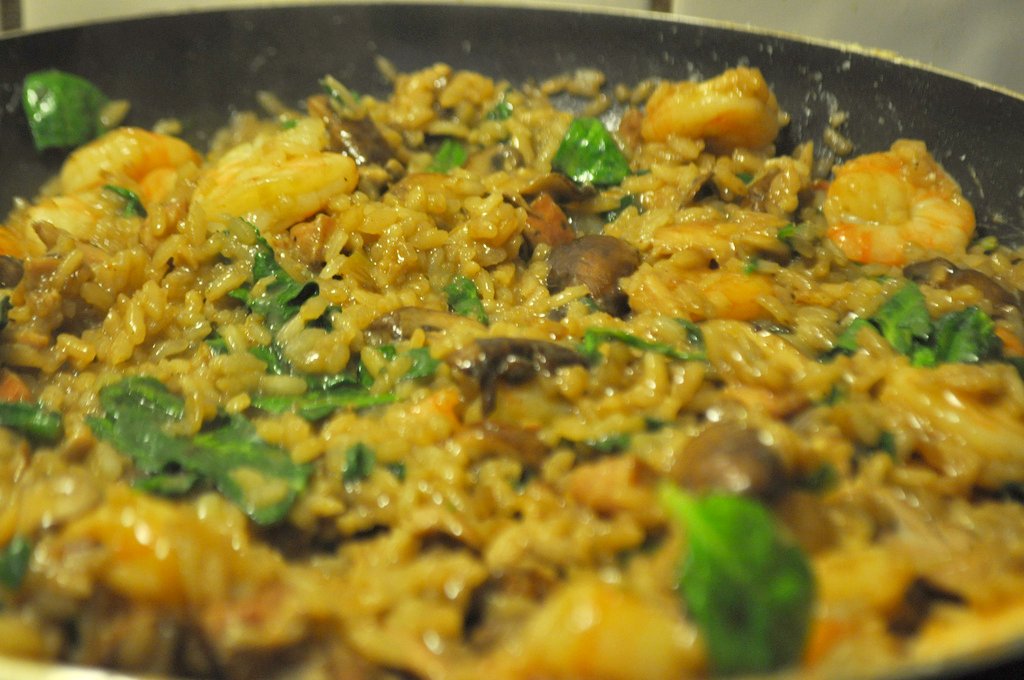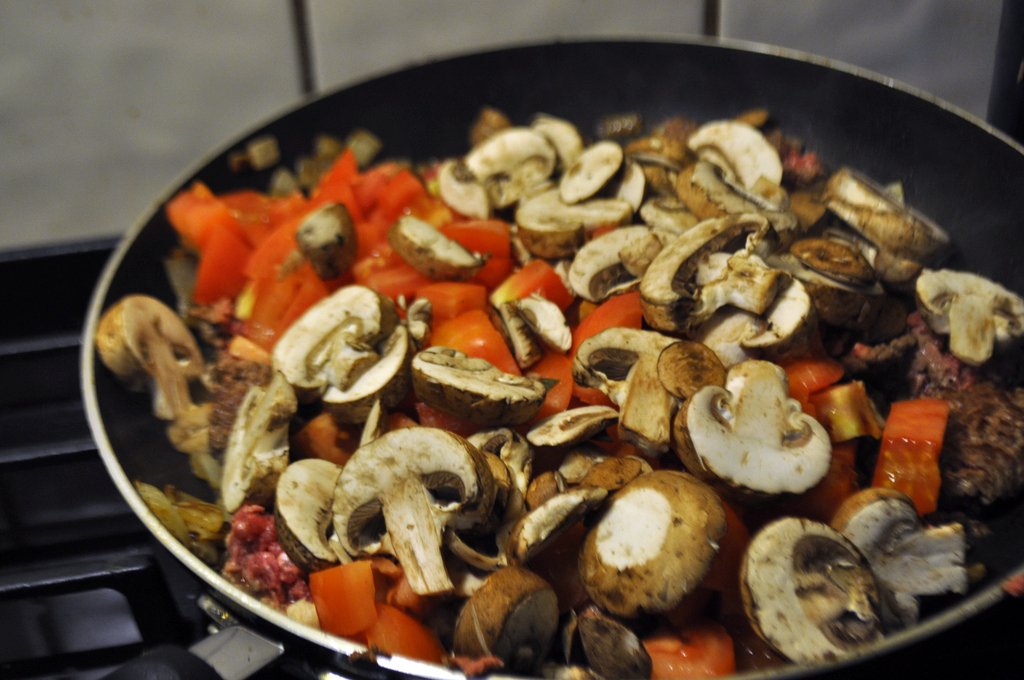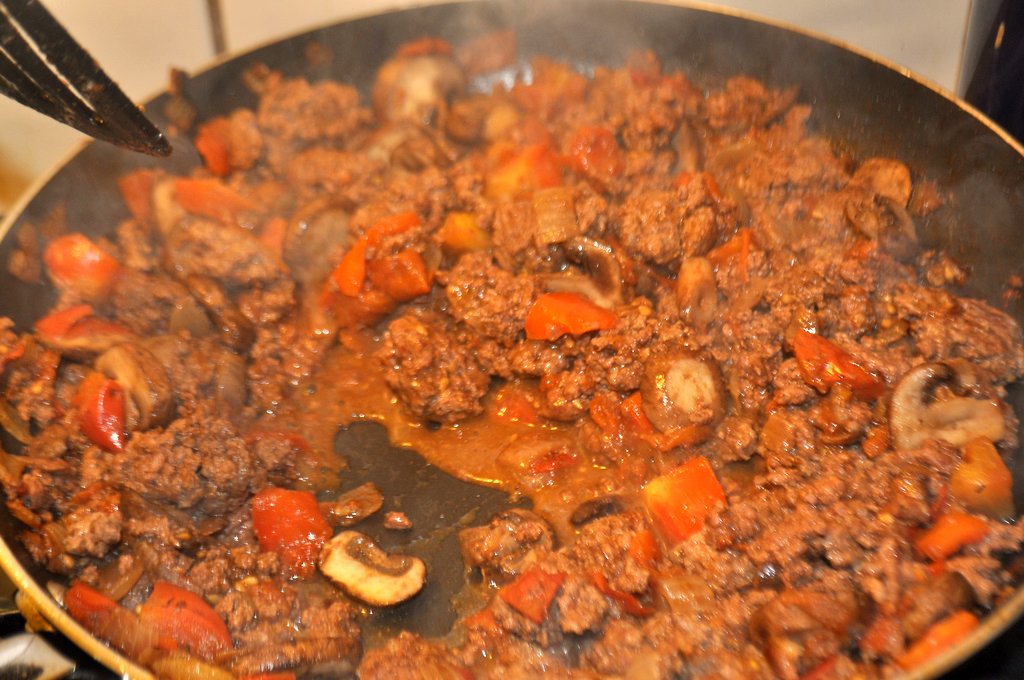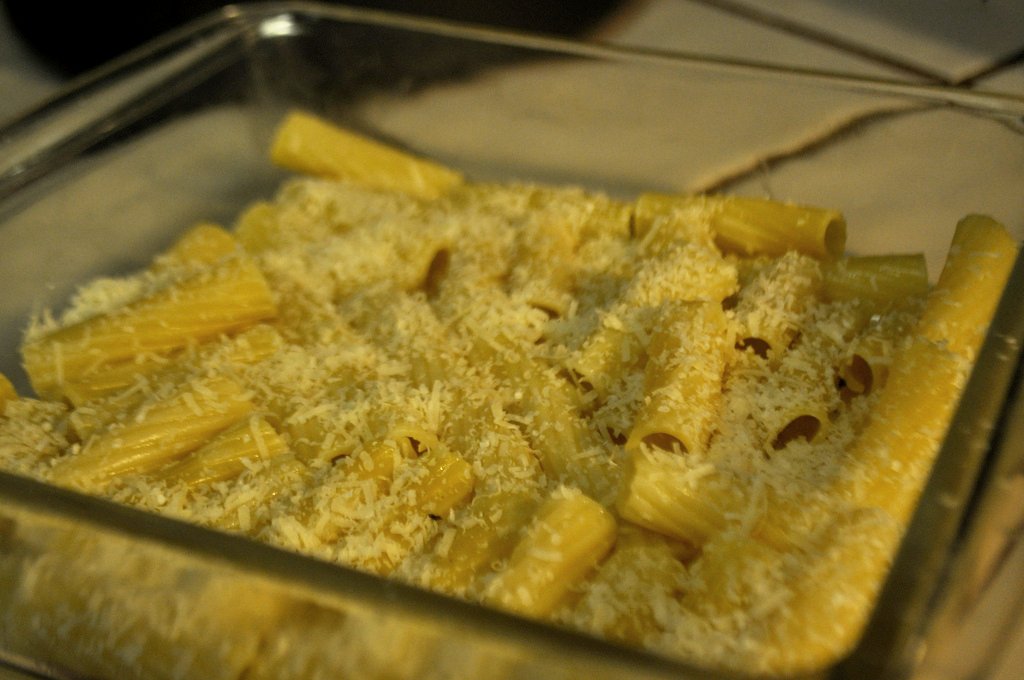Friday, April 30, 2010
spicy gingerbread with a ginger and brown sugar streusel
On the long drive south back to college after spring break, the Pi Queen, GL and I decided that we needed to take some of our childhoods with us. We were on the road, driving away from home and towards frightening things like midterms and differential equations and dining commons meals. (The latter is the worst. I like differential equations, sometimes).
To combat all of these activities and worries we decided that what we really needed was an Easter egg hunt: bright plastic orbs filled with candy, fingers died pink and green and purple from coloring hardboiled eggs, skipping around on bright green grass under a bright blue sky with brightly colored baskets (actually we used grocery bags). But you see the appeal? There was a dollar store next to the station where we parked for gas. We exchanged looks, evil cackles, and bought some pretty plastic eggs. I think the camouflage ones are my favorite.
The weather delivered the promised cloudless sky. We boiled several dozen eggs the night before, turned our fingers funny colors dying them, and frolicked out to the lawn the next morning. It was lovely. There was candy, there were eggs, there was MA climbing things three times her height to hide them. The Snark had her first Twix bar (until recently, she's been allergic to dairy) and her exclamations of joy were wondrous and amusing to behold.
My contribution was two loaves of this delectable gingerbread and some Cornish pasties (which were largely made by the wonderful GS). But more about them later. This is my favorite gingerbread I've made, and not just because the other one was terrible. This recipe is dense but tender, spicy and flavorful, very palatable but not too sweet. I highly recommend it. I added the struesel last minute for extra flavor. It was a tasty addition, but not necessary. This loaf stands on its own.
Gingerbread
1/2 C brown sugar
1/2 C butter
2 eggs
1 C molasses
2 1/2 C flour
2 tsp
baking soda
3 tsp cinnamon
1/4 C candied ginger, chopped
1 tsp vanilla
1/2 tsp nutmeg
1/4 C water
3/4 C apple juice
1/4 C butter
1/3 C flour
1/4 C brown sugar
1 Tb cinnamon
1/4 C chopped candied ginger
Preheat oven to 350 degrees.
Cream butter and brown sugar. Add egg and beat until combined. Add molasses and beat until combined.
Stir in dry goods. Microwave water and apple juice and add them to the batter.
Using two forks or a sturdy whisk, cut the butter into the flour, sugar, cinnamon, and ginger.
Pour batter into two greased and floured loaf pans. Sprinkle on the ginger topping.
Bake 1 hour.
What are your spring traditions? Do you do Easter? Passover? Equinox? Do you bake special cookies on the day you first see an iris, or have a picnic the first day it's warm enough for shorts and T-shirts?
Tuesday, April 27, 2010
dumplings of sweet squash, creamy tofu, and crunchy, spicy watercress, fried with chunks of garlic
I haven't spent much time at the Multicultural Center at my university, and now I'm wondering why. Random, exciting circumstance found me there in a recent afternoon, barging gleefully into the tail end of a dumpling making lesson. A nice student was bashing flour and water against the sides of a pot and then rolling the thick dough out with the stick of her wooden spoon. She handed me a tea-saucer-sized round and centered some pork and green onions on it with chopsticks.
My friend GL, who had called me over to the delicious-smelling pink-walled building, and who had a plate full of dumplings already at this point, is fantastic in many ways. One of these ways is sculpting. With a few comments from the dough lady, GL showed me how to fold the dumplings properly. (Hers were much prettier than mine, obviously. Hers were much prettier than some works of art, and they tasted good, too). We took them back to my dorm kitchen and had them, boiled and then fried with garlic, for breakfast the next morning.
That by itself would've made my day, but as we packed up our plates of dumplings, we were told there was a multicultural dinner that evening. Free. Indian, Japanese, and Mexican food, and dessert, purely in exchange for our glowing presence. GL and I exchanged meaningful glances. (We were out of commons meals for the week.) In an hour we were back, and hungry.
The food was wonderful. It made me homesick for a place where tandoori chicken, boba tea, and good sushi are not minorities. (Bay Area, I'll be back soon! I just have a few midterms and finals to get through first).
GL and I were quite taken with the dumplings, so after breakfasting on them that next morning with our friend The Snark, we hatched a scheme to have them for dinner too. Weekend Wokking's May ingredient is tofu, so I volunteered that for the filling. We also decided that a great deal more green onion than our MCC friends had included was necessary. From there our plottings only grew grander. Results below.
(I'm not too impressed with my pictures of this. Sorry. Trust me, this was considerably more delicious than it looks here. Actually, even knowing what was going in it, seeing the green and orange and white of the filling, smelling them fry in the garlic, I was surprised at how tasty it was).
Tofu and Squash Dumplings
1/2 C cubed banana squash
2 heads small baby bok choi, diced
1/2 C green onion, diced
1/4 onion, diced
1/4 C diced watercress (or more, if you like it's crunch and subdued tang. I do. The watercress in this came out of a can. I'm not quite sure what real live watercress looks like).
1 pkg firm tofu, diced
1/4 C soy sauce
flour
water
For the filling:
In a bowl, cover the banana squash with water. Microwave for ten minutes or until soft. Mash.
Saute the bok choi in 2 Tb soy sauce. Saute the onion.
Mix squash, watercress, bok choi, sauted onion, green onion, tofu, and soy sauce in a large bowl.
For the dough:
Combine flour and water until a stiff dough forms. To test, take a small ball and roll it out on a floured surface. It should be stiff, but when you fold it in half it shouldn't break or crack. If it breaks or cracks, add more water. If it's squishy and soft and wet, add more flour. Don't worry to much about it. It doesn't have to be perfect, it just had to hold the filling.
You probably want to get a pot of water boiling, at this point.
Making the dumpling:
Roll out a bit of dough into a flat circle about the size of your palm. Put about 2 Tb filling in the center (depending on how large your palm is). It's better to have less than more, because you want to be able to seal everything properly.
Now, fold the circle in half and pinch the upper edges together tightly. Just to the side of the crease you just made, pinch part of the dough edge together. Fold that flap toward the center and seal it to the edge. Repeat until you're out of dough, then do the same on other half of that face. Also, look at the pictures.
Add the dumping to the boiling water and cook 7-12 minutes.
In a wide, flat-bottomed pan heat some olive oil and some chopped garlic. (That odd little square thing? On the first picture? That's aromatic, beautiful, chewy, spicy, and sweet caramelized garlic. Yeah). Fry the boiled dumpling until delicious.
Sweet and Salty Dipping Sauce
1/4 C soy sauce
1 Tb brown sugar
1/8 tsp (or more) of your favorite spice. (We used cayenne pepper, because it's all we had, but something more saucelike and less powdery would be better).
sesame seeds (optional; for the sprinkling)
Mix soy sauce, sugar, and spice. If you're feeling extra special, boil it down a little to thicken.
Look at all that garlic! But I digress. That was last month's special ingredient...
I'm submitting this post to Weekend Wokking, hosted this month by Sweatha of Tasty Curry Leaf. Weekend Wokking is a monthly international food blogging event centered around the celebration of a single ingredient in as many tasty dishes as possible. This month's ingredient is TOFU. Weekend Wokking is the brain-child of WC of Wandering Chopsticks. Thank you WC! Thank you Sweatha for hosting!
This was the focus of another exciting group dinner night. We made vast, towering, aweinspiring amounts of dumplings. They were delicious, chewy, soft, warm, and tasty, but we didn't eat until we were stuffed. There was a blackberry-blueberry pie, by our fabulous Pi Queen, sitting off to the side, eyeing us smugly. We knew we had to save room.
This time I'm being, by request, more explicit in my teasing: Nyah nyah. Doesn't that look delicious? The Snark, who dislikes cinnamon in her pies, says The Pi Queen is slowly converting her.
Friday, April 23, 2010
horiatiki, a greek tomato salad with thinly sliced red onion and green bell pepper in a dressing of balsamic, olive oil, and feta cheese
I love Greek salad. I love Greek food. Maybe it's the spices, maybe it's the vast quantities of olive oil, maybe it's the memories of skipping about local Greek culture festivals with souvlaki in one hand and a bowl of loukoumades in the other. Two sweltering, delicious weeks in Greece helped, too, I imagine.
In my family, when we make a salad for dinner, it never involves lettuce. If I went to the store and bought a bag of iceburg lettuce or romaine, my mother would look at me funny when I walked back in with it. (Spinach is a frequent guest at our table, but always cooked, in omelettes or lightly sauted with balsamic vinegar and sesame seeds). When we say "salad" we mean Greek salad: a tasty bowl of ripe juicy tomatoes, sliced cucumber, kalamata olives, and crumbled feta cheese.A splash (or sprinkle, or half cup full, depending on which family member you are) of olive oil and balsamic vinegar and we're a happy little nuclear unit.
I wasn't surprised to find (but probably should've been) that our salad is surprisingly authentic. In Greece, the "peasant/village/country salad," horiatiki, contains tomatoes, cucumbers, thinly sliced red onions, bell pepper, olives, and feta. There are various adaptions (an addition of cracked bulgar wheat in Cyprus, for example).
I was excited: ancient Greek cuisine on our table! But then I realized that while olives and feta are about as Greek as you get, tomatoes and bell peppers are native to South America. It doesn't make it any less delicious, or any less common in Greece now, but it is something to think about.
Tomatoes were introduced to the Old World as early as 1493 by Cristobal Colon (Christopher Columbus), though some argue Cortez was the source. They were eaten widely in France and Spain, though the English, on the word of barber/surgeon John Gerard, were convinced they were poison. (The leaves and stem are). The plant grows readily in Mediterranean climate and spread throughout the region. Sometime in the next five hundred years, horiatiki got its tomatoes. For this, in my house, we are very glad.
Horiatiki (Greek Tomato Salad)
3 heirloom tomatoes, cut into wedges
1/4 red onion, thinly sliced
1 green bell pepper, thinly sliced
1 small cucumber, diced
1/4 C crumbled feta cheese
kalamata olives
olive oil
balsamic vinegar
salt and pepper
All of these ingredient measurements should really be "to taste." In my house, you up the tomatoes, olives, and cucumber, and you leave the feta, onions, oil, and vinegar out of lil sister' bowl entirely.
How to construct the salad? Put all ingredients in a bowl. Mix. Serve. (Often, we leave out the serving bowl entirely and just mix the ingredients directly in four dinner bowls, as everyone has their own preferences.)
Friday, April 16, 2010
spiced beef cooked with pomegranate juice and wrapped in a coil of flaky phyllo pastry
This dinner was inspired by [eatingclub] vancouver's Borek with Beef Filling. (TS and JS, the sisters behind [eatingclub], make delicious, creative food. I always love their take on WC's Weekend Wokking). This was back before I lowered my dorm meal plan and started cooking again, so I was very hungry and craving good, interesting food. I saved the page and, when spring break came rolling around, brought it out gleefully to make with friend CH.
I love the contrast between my spring break, full of cooking, baking, feeding friends and family, and hanging out with little sis, and the average spring break of my university peers. Gives me the chuckles it does.
Bureks (boreks), according to the lovely wikipedia, seem to be anything wrapped in phyllo dough (or similar doughs, such as yufka). (I approve heartily of most things that fit this description). The spiral shape that TS, JS, and I chose (because it's pretty) is Bosnian style. TS and JS chose to stuff theirs with a Turkey inspired filling, but I was quite taken with the description of traditional Arab burek flavors: meat cooked with nutmeg, caramelized onions and pomegranate juice.
I don't think I was greedy enough with my filling. When I make this again, I'd want each layer to have a lot more tasty inside of it.
Pomegranate Beef Burek
1/2 lb ground beef
1 onion, diced
2 Tb butter
6 oz pomegranate juice
1 Tb allspice
1 tsp paprika
1/2 C pomegranate pips (Trader Joe's stocks them, as does Costco. You could also get a pomegranate and de-seed it yourself).
1 pkg phyllo, thawed (You'll find this in well-stocked grocery stores, in the frozen section near the pie crusts)
1 egg
1/2 C yogurt
1/4 C milk and olive oil mixed together
Preheat oven to 350 degrees.
In a frying pan, caramelize the onions in the butter, until they are soft, sweet, and brown. This should take fifteen minutes or so. Be patient and don't worry about burning too much. Add the beef and cook through. Add the pomegranate juice and reduce it to thick syrup, then add the spices and the pomegranate seeds.
Mix together the egg, yogurt, milk and olive oil. On a large, clean surface, unfold your phyllo sheets. Carefully (don't panic if it tears, it's not the end of the world) lift one phyllo sheet of the stack and lay it down on the wax paper. Brush with yogurt mixture. Lay another sheet on top and brush this with yogurt as well. Put some beef mixture along the bottom edge and then roll up the sheet, tightly.
On a cookie sheet, lined with parchment paper, coil the roll around itself. Lay out and yogurt-brush another two sheets, and roll up some beef mixture again. Continue the coil on the cookie sheet. Repeat until you run out of phyllo dough or beef.
Brush the top with the remaining yogurt mixture and sprinkle with sesame seeds. Bake for 45 minutes or until crispy and golden.
Make it the evening you plan to devour it. It's not nearly as tasty the second day. (You probably won't have any left over, anyway. We wouldn't have, if we weren't purposefully wrapping away samples of meals for Mum, who was out of town).
I'm a big fan pf phyllo. Have you used it before? What sort of dishes to you like to make? Are you from a culture that traditionally uses phyllo?
Friday, April 9, 2010
moist, dense pumpkin bread with thick, chewy crust
Something about pumpkins says fall. (Something about pumpkins also says yum). They're the shape of a harvest moon, the color of an autumn leaf. As the leaves begin to change, pumpkins begin to line the streets, dot windowsills and lawns, overflow from large crates in front of supermarkets. There's something about their affinity for cinnamon and nutmeg, their secret friendship with apples, their mellow orange sweetness.
But it's spring! you say. You should be talking about daisies and asparagus and sunshine!
I know. And I'll dance cheerily amid the sweet, fresh flavors of spring in later posts. But I love autumn. I'm missing dry, crackling, vibrant leaves and crisp fall air, but I have pumpkin bread and the world is good.
(If you do want to hear about asparagus, with lovely pictures and hungry-making prose, (and you should): go here).
The recipe I printed out and got orange stains and flour and butter on is found here. As you can see, it doesn't look much like what I actually made, but it gave me a good starting point. This bread came out very moist and very dense. The crust was thick and chewy and darn tasty. I liked it best toasted and buttered.
Pumpkin Bread
1 1/4 C mashed pumpkin (from a can; but make sure it's just pumpkin and there aren't any pie spices added)
3 eggs
1 banana, small
1/2 C applesauce
1 C sugar
1/8 C molasses
1/8 C dark brown sugar
1 tsp baking soda
1 tsp cinnamon
1/2 tsp nutmeg
1/4 tsp allspice
a pinch ground ginger
1 3/4 C flour
Preheat oven to 350 degrees.
Beat the wet ingredients (that includes the sugars) for 5 minutes. Add the dry ingredients and beat one minute. Pour into two greased and floured loaf pans. Sprinkle the tops with brown sugar. Bake for about an hour.
You can also make this batter into muffins. Fill muffin cups 2/3 of the way full and bake at 350 degrees for 15-20 minutes.
The bread never actually passed the "toothpick test" for me (sticking a toothpick or wooden skewer into the bread and seeing if it comes out dry, which would signal doneness). I baked this poor baby for maybe an hour past the fifty minutes suggested, which for some odd reason didn't do it any harm. When I finally gave up and took it out of the oven, I found it dark, but still sweet, moist and delicious. I don't recommend baking it for as long as I did, as I'm sure it wasn't necessary, but I would bake it for at least an hour, to get a proper chewy crust. You could also add another 1/4 C of flour or so to make it a little drier--but I found I quite liked it the way it was.
What else do you like to make with pumpkin? Do you have a favorite fall snack?
Wednesday, April 7, 2010
creamy shrimp risotto with spinach, mushrooms, chicken-apple sausage, and garlic
We made this for dinner while Mum was on a business trip, practicing launching rockets in Florida. Since she was gone for several nights, and I was going crazy in the kitchen, we saved her a little piece of every dinner, stacked carefully in the fridge, to eat when she got home. Except this one. It barely made it out of the kitchen. We ate it standing, occasionally wandering back for a second bowl, and a third, and a fourth. (They were small bowls.)
(Alright, not that small.)
This is a recipe best done with a friend. First off, I can think of few things more fun than creating rich, warm, creamy tastiness with someone I am fond of, but there's also the fact that this calls for you to do several things at once. You can do this in stages, but it takes organization and thought. I wanted to cook, not think, and little sis was kind enough to offer a second pair of hands.
Shrimp Risotto
1 onion, diced
4 cloves garlic, minced
3 C uncooked short grain white rice
1/2 C red wine
1 C mushrooms, sliced
3 sausages (I like chicken-apple)
1 C shrimp, raw, thawed
3 C broth (I used homemade chicken broth.)
6 oz. apple juice, optional
1 cup spinach leaves
1/2 C grated parmesan (or more. I like more.)
Saute onion and garlic in a little olive oil. Evacuate this to Pan #2 when they are golden and fragrant (I love how my kitchen smells when onions are caramelizing). In Pan #1, saute the rice until it is translucent (7-10 minutes).
Add the red wine to Pan #1 and reduce it down (about 15 minutes).
While you are doing this, heat up a pot of chicken broth. In Pan #2, saute the mushrooms and sausage. When they are well browned, lay the shrimp on top of them and lid them for 2-3 minutes. Check if the shrimp is done by cutting one in half and making sure it is opaque all the way through. Turn off the heat and cover Pan #2 until you need it again.
Meanwhile in Pan #1: when the wine has largely evaporated, add a ladle of warm broth to the rice. Stir, continuously, until it is mostly soaked up. Add another ladle. Stir until it's soaked up. Another ladle. Stir without stopping. Ladle. Stir. Ladle. Stir. You can see where this is going. Don't stop ladling and stirring until the risotto is as creamy and thick as you want it. Taste it as you go, checking for doneness of the rice. If it's hard instead of tender, keep ladling, stirring, tasting. If you run out of chicken broth, add apple juice, or water. This took me about 20-30 minutes. (It was worth it.)
When you feel like you've reached the optimum level of creaminess, add the delicious contents of Pan #2 to the creamy rice and broth of Pan #1. Add the spinach and grated parmesan as well. Stir until the spinach is wilted and the cheese is melted.
Serve! Enjoy! Devour!
What sort of tasties do you like in your risotto? What are your other favorite shrimp dishes?
Monday, April 5, 2010
homemade chicken broth
 When I say I've made soup from scratch, I mean that I'm the one who sliced the carrots, sauted the onions, shredded the chicken breast, and poured the broth out of the can into the pot. This definition satisfies me, even if there are those who swear by homemade chicken broth. I'm sure it's delicious, but what a time commitment!
When I say I've made soup from scratch, I mean that I'm the one who sliced the carrots, sauted the onions, shredded the chicken breast, and poured the broth out of the can into the pot. This definition satisfies me, even if there are those who swear by homemade chicken broth. I'm sure it's delicious, but what a time commitment! But it was vacation. I had long, empty days, a chicken carcass, and a willing kitchen. They say chicken soup is good for the soul--and homemade chicken broth, I'm sure, is even better. I can't weigh in on that debate yet, I'm afraid (other than my gut instinct that food-not-from-a-can will always prevail in quality over food-from-a-can). This broth never made it to soup, because it got waylaid in my shrimp risotto instead. But, as Alton Brown would say, that's another show.
Chicken Broth
1 chicken carcass
8 C water
1/4 onion
3 carrots
1 clove garlic
1 Tb whole peppercorns
Put everything into a large pot. Bring to a boil then simmer for six hours. Fat will rise to the surface; ladle it off occasionally (unless you really like chicken fat, or, like me, forgot). Use immediately or refrigerate.
If you don't ladle off the fat, it will form a white disk on the surface of the broth when refrigerated. I imagine there are many interesting uses for flavorful chicken fat.
Makes about 1-2 C broth.
Thursday, April 1, 2010
a penne bake with beef, tomatoes, mushrooms and pesto ricotta
EJL: "What do you want for dinner?"
LITTLE SIS: "Ground beef."
EJL: "..."
Penne Bake
2 C uncooked pasta
1 Tb olive oil
salt
5 sprigs basil, stemmed
1 Tb olive oil
1 tsp balsamic vinegar
1 C ricotta
1/2 onion, diced
1 1/2 lb ground beef
5 tomatoes, diced
1 1/2 C mushrooms, sliced
1/4 tsp (or more, if you like them) each: oregano, pepper, paprika, thyme
1/2 C red wine
1 C ricotta
1 C grated parmesan
Start boiling a big pot of water with olive oil and salt. Cook the pasta and set to the side.
In a food processor, blend the basil, olive oil, balsamic vinegar, and 1 C ricotta until smooth. Set to the side.
Saute the onion in 2 Tb olive oil until soft (a few minutes) then add the ground beef and brown a little. Add the mushrooms, tomatoes, and spices (don't worry if the meat is still a little pink at this point). Cover and let steam for about three minutes, then uncover. Add 1/2 C red wine and let the liquids reduce.
(The sign that a sauce is properly reduced: Scrape a spatula across the bottom of the pan to reveal the pan surface. Watch how the sauce flows back into the cleared space. If it moves slow, like syrup, it's ready).
Butter a baking dish and line the bottom with a layer of pasta. Sprinkle with a little parmesan.
Add a layer of meat. Add all the basil ricotta in one layer. If it doesn't cover the whole surface, add more plain ricotta to fill in the gaps.
Add another layer of pasta, then another layer of meat. Top it all with shredded parmesan and pack it down with the back of a spatula.
Bake at 350 degrees for 15 minutes.
Subscribe to:
Posts (Atom)


